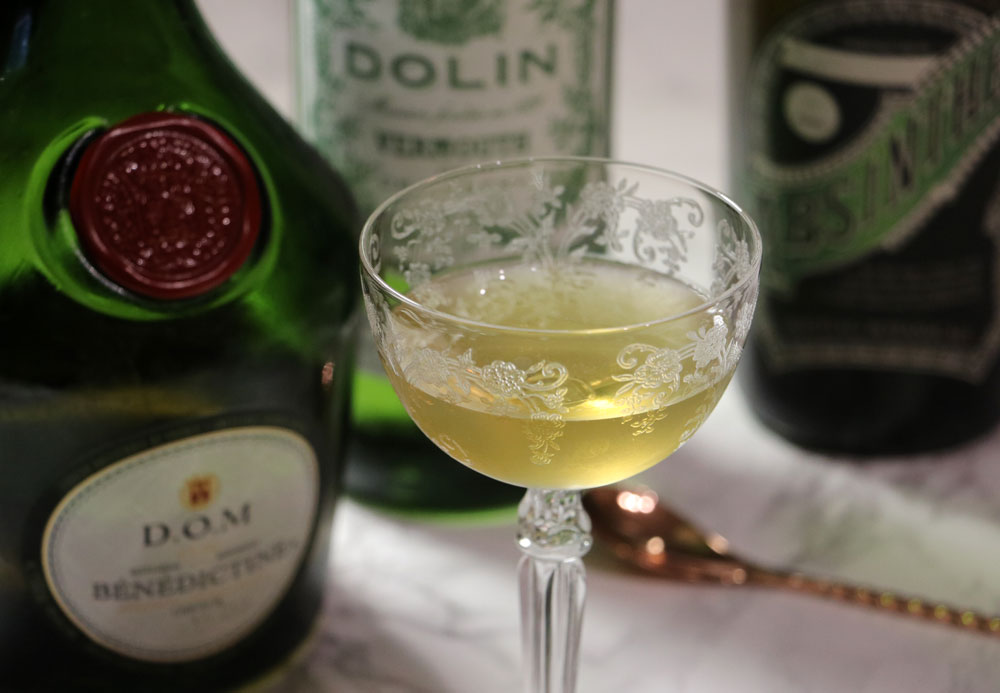Benedictine is our jam. Ryan and I are both big fans of this particular herbaceous spirit and were very excited to see it play a starring role in tonight’s Mr. Boston’s recipe, the Chrysanthemum Cocktail.

The Chrysanthemum flower can be eaten and the yellow or white varieties are often used in Chinese tea. I have no idea why this lovely flower inspired the Chrysanthemum Cocktail. Perhaps it is one of the 27 mysterious ingredients in Benedictine?
Sticking with the 1917 recipe originally published by Hugo Ensslin, Leo Cotton’s 1935 Chrysanthemum is different from any of the recipes I could find online today. Even Mr. Boston’s website has updated to Harry Craddock’s Savoy recipe.
I wanted to try out both and see which recipe I fancied more. Having too much Benedictine couldn’t hurt, right?
The 1917 recipe is as follows:
- 1/2 Benedictine
- 1/2 Dry Vermouth
- 3 dashes of Absinthe
For our first round of Chrysanthemum Cocktails, I followed the script and employed Dolin’s Dry Vermouth, Benedictine and our homemade Absinthe for the task.
All three ingredients rely heavily on botanicals and each is a strong flavor profile on it’s own. I’m honestly not a huge fan of dry Vermouth on it’s own and I was pleased that the Benedictine would be paired equally to tone it down a smidgen.
After stirring the ingredients over ice, I was sad to discover that the Benedictine was indeed too heavy. The resulting cocktail was good but a bit too sweet.
For the second round we used Harry’s 1930 version which calls for 1/2 the amount of Benedictine. As feared, I found this blend to be too heavy on the Vermouth side.
Finally, I split the difference and just like Goldilocks discovered, it was just right!
After rehabilitating round two, my final cocktail looked like this:
- 1 ounce Dolin’s Dry Vermouth
- 3/4 ounce Benedictine
- 1/3 teaspoon of Bootleg Botanicals Absinthe Infusion
The final cocktail is very good, I’m still wondering if Lillet would make for a better version of the Chrysanthemum Cocktail. Maybe round three is in order…

